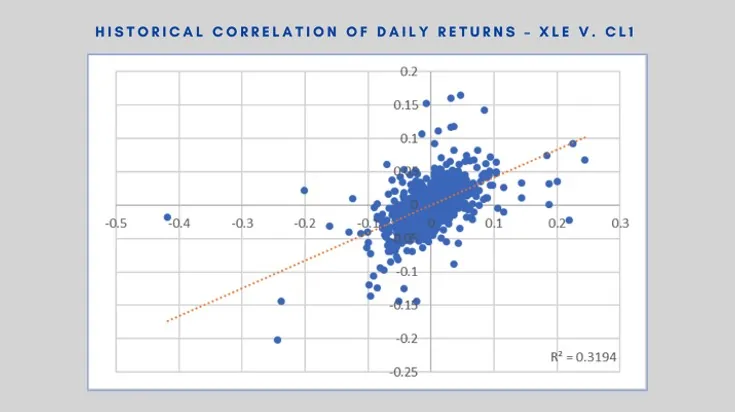We’ve hit the point in the recovery where energy risk managers start to second guess themselves.
Headlines of major shifts in attitude include raising capital commitments, higher price expectations, and even the reversal of derivative hedges that were executed earlier in 2021 and with oil and natural gas at new highs are now deeply underwater. Bloomberg, Reuters, and other media outlets covered public company losses and report that Pioneer, Devon, Oxy, and Diamondback are among the public Exploration & Production (E&P) companies to record greater than $1 billion in losses for 2021. This list is likely to grow with both March WTI and April Brent futures trading above $90/bbl, and Henry Hub natural gas above $4/mmbtu for March (as of 15 Feb 2022).
Does this story sound familiar? It should. It is a predictable cycle. Another predictable outcome is how this cycle leads to a loss of focus. Equity analysts, credit providers, and other market participants and observers start talking about price expectations and hedging decisions instead of effective business management. It doesn’t have to be this way. Perhaps risk managers can choose how they want to be judged. In this and upcoming notes, I hope to highlight the importance of good risk management processes, specifically how good processes lead to better outcomes without the need to be a perfect market forecaster. Ultimately, risk management, when done well, contributes to strategy and increases the probability of success, but corporate managers have to first define success and take control of the conversation around that definition.
Myths such as “investors allocate capital to oil and gas because they want exposure to commodity prices” persist because there is some truth to them, but they are incomplete thoughts. This thinking minimizes the impact management has on the business and is in conflict with what lenders and investors actually tell us. Does interest in investment in oil and gas tend to rise with prices? Answer: of course, but investing in E&P companies, or energy companies in general, is an inefficient way to capture the value of rising prices. Consider that the XLE Energy Select Sector SPDR’s daily returns over a roughly 15-year period through the end of last year correlate to the price of oil at an r-squared of just 0.32:
In reality, management’s ability to extract value at any price is more important to attracting investors than the actual price of oil. Hence, the recent refocus among E&Ps is on cash flow, paying down debt, and returns to investors. It’s no secret that investors didn’t benefit from high prices the last time energy commodity prices reached similar heights, so lack of interest in investing in the industry has less to do with the price of either oil or natural gas retesting highs, and more to do with the fact that the returns have not lived up to promises.
By engaging thoughtfully in markets, risk managers can frame the conversation to judge the success of their companies against benchmarks that are suited for corporate evaluation. That is, taking action to produce outcomes that can be controlled. This relieves the manager of the obligation to predict the future and instead allows him/her to allocate resources toward effectively (i.e. – profitably) executing strategy.
Indeed, looking at recent investor presentations, we can see that the promises managers make to potential investors seldom talk about providing exposure to oil prices. From Pioneer’s January 2022 investor presentation, readers can see a focus on free cash flow, dividend payments, divestments, and emissions targets. Furthermore, they support those promises with an investment thesis based on the forward strip of oil and natural gas prices, which averaged ~77.45/bbl and ~4.375/mmbtu (11 Jan 2022).
The forward curve, though, is no better a predictor of price than a weather forecaster is at predicting warmer January temps in Minnesota. On average, there is at least a 20% assumed potential volatility of forward prices. More recently, it is more like 40%! Few, if any, strategic plans can withstand a change in base assumptions of 40% over a calendar year. So, what is a risk manager to do? Answer: manage risk. Active risk management is an integral part of strategy deployment. From this perspective, risk managers should have a thoughtful risk strategy in place with documented and rationalized support for actions taken and/or avoided. That is, making an explicit judgment to hedge or not to hedge a given period, amount, exposure or otherwise.
One should always have a well-reasoned plan on when to hedge, how much to hedge, and a justification for carrying a certain level of hedging at any price, not to mention volatility. Over the last two years, extreme volatility exposed how inadequately commodity price risk was managed for nearly all companies. The clear and present danger, I fear, is that we are recycling those bad decisions.
Note from our Guest Author:
The articles that follow will explore the components and concepts of a good risk management process, using Blue Lacy’s framework for addressing risk. We hope to use this to start the conversation with you and help firm up your strategy during what is sure to be another year of unpredictable events in the energy market.
Meet the Author!
Steve Sinos, Blue Lacy Advisors, LLC
Email: Sinos@bluelacyllc.com
Phone: +1-832-413-3124
Website: www.bluelacyllc.com
Steve has spent his career in strategy, risk, trading, and investment. He works with investors to source investments in opportunistic or high growth sectors, with particular interest in early-stage companies solving clearly defined problems.
He is currently a Managing Partner with Blue Lacy Advisors LLC, giving management teams and investors confidence in their decision making by supporting strategic planning and execution, risk management, commodity trading, and market analysis.
Media Contact:
Megan Roth, Marketing Manager
Office: 952-746-6056
Email: mroth@hedgestar.com
What’s next? Keep your eye out for…
-
ARTICLE II: Risk Management – Inherent to Strategy Execution
-
ARTICLE III: “No one saw this coming!”
Check out our services:



